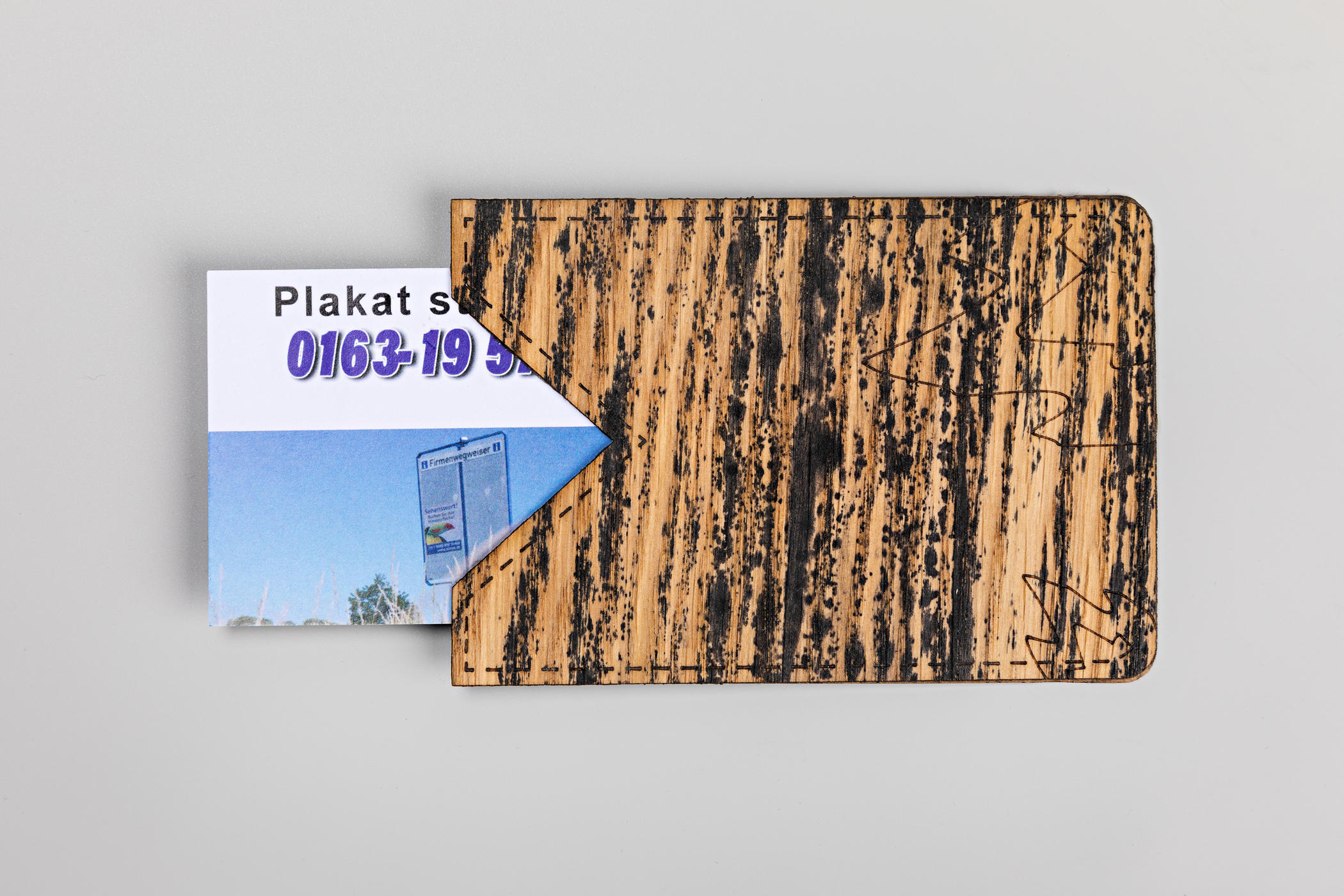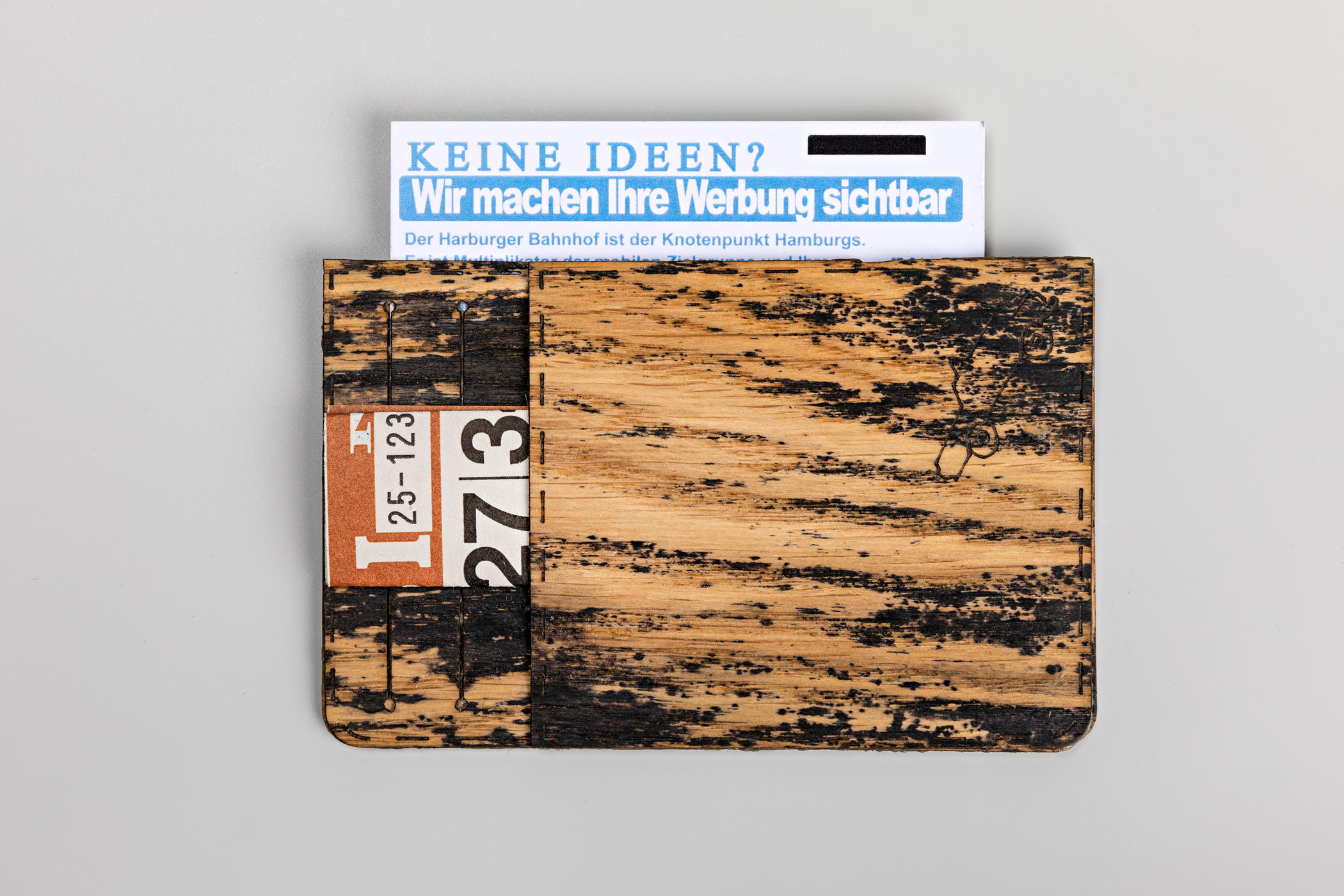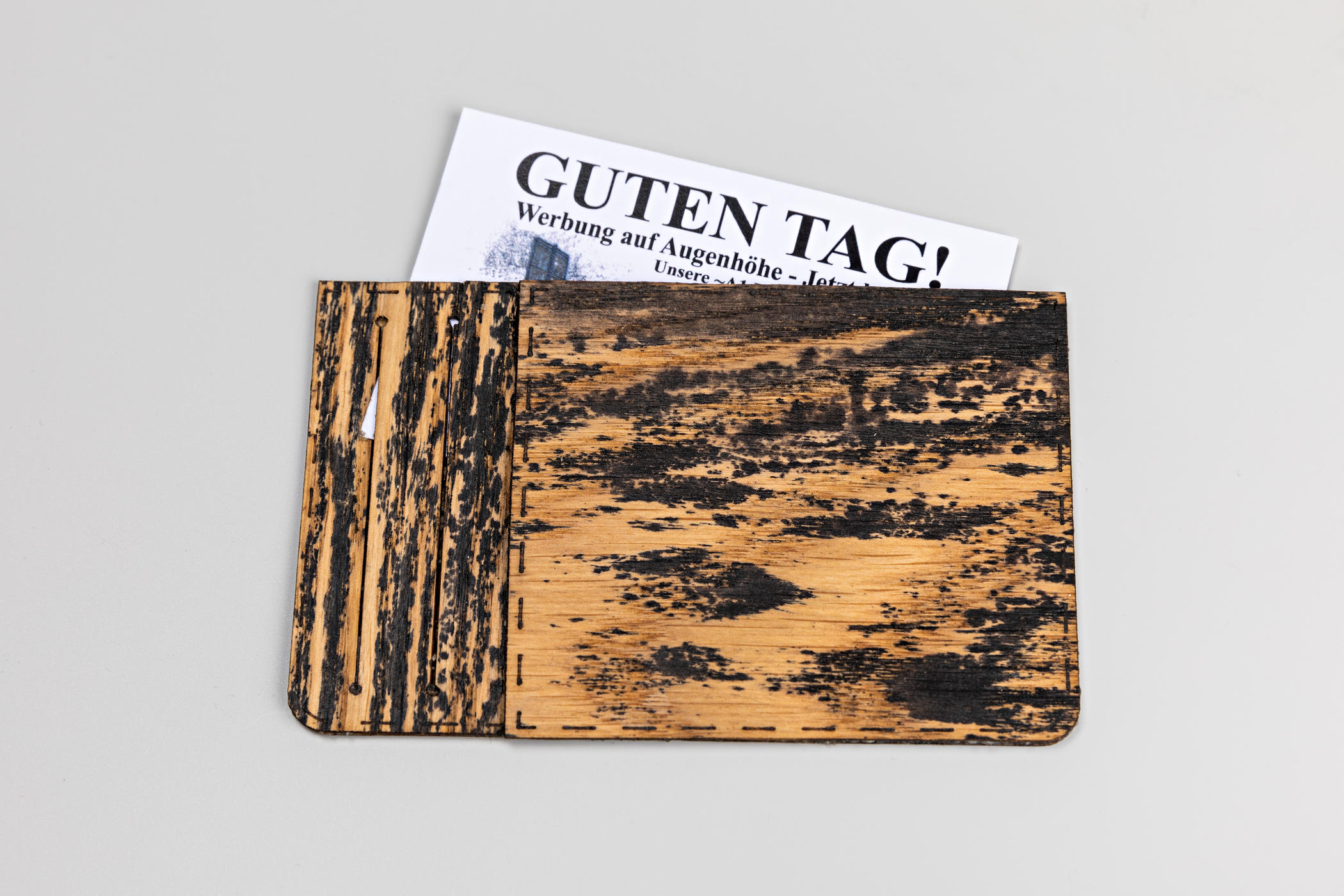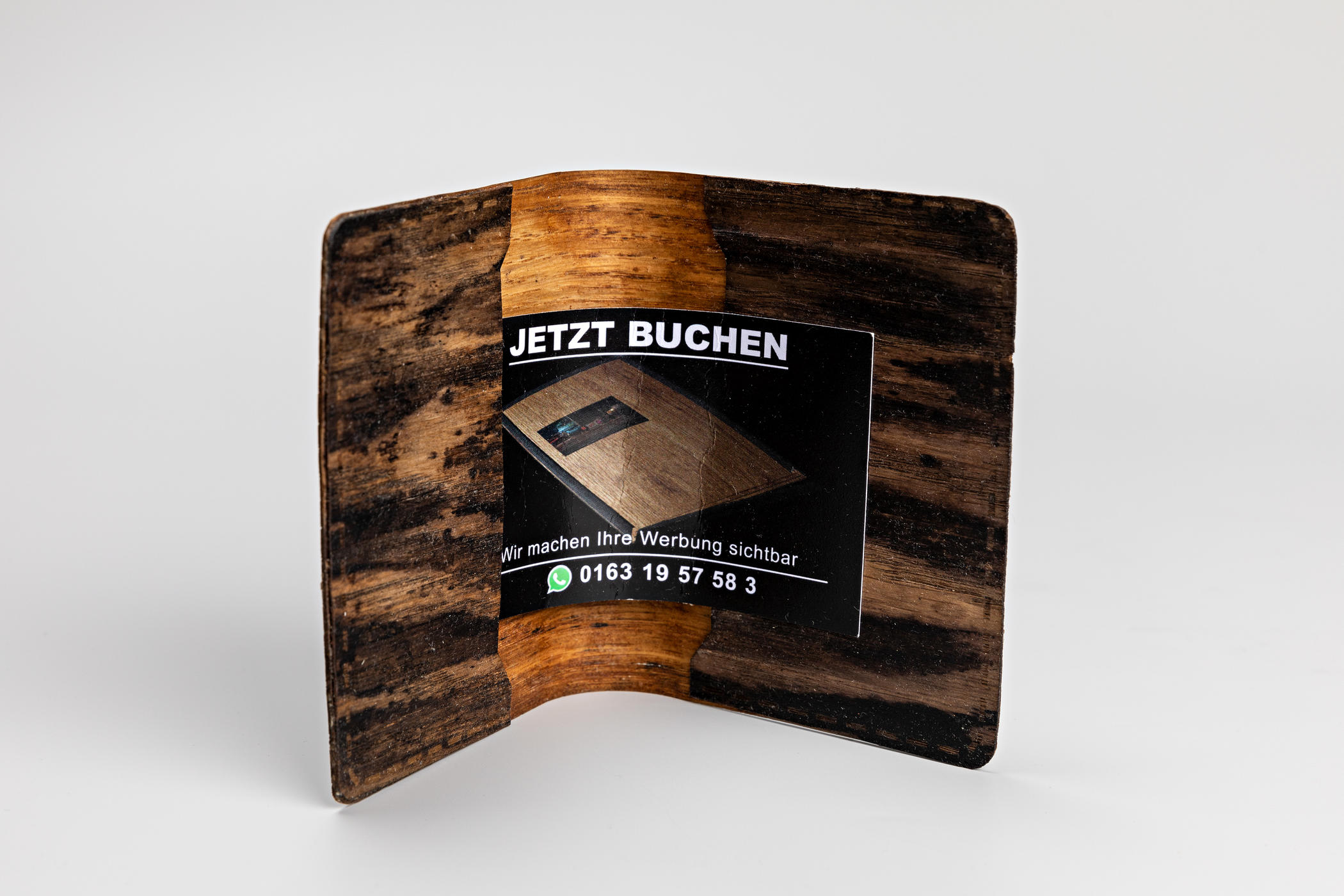Card Case
Wessel, Torben






In his exhibition No Ideas?, Torben Wessel addressed processes of value generation, pursuing the principle of mimicry. The showcases were given back their original function as a marketing tool for the duration of the exhibition by Wessel having replicas of oak veneer billboards installed, which were offered for rent. The billboards themselves were promoted through a separate campaign of business cards and the website www.keineideen.de. In documentary photographs that served as a kind of placeholder, Wessel took up the recursive principle of "advertising for advertising" that he pursued. The original purpose of advertising is to create incentives to buy and subsequently generate profit. In the exhibition, however, the small income from the rental was raffled off at a bingo evening. The exhibition thus imitates and adapts classical strategies of value creation while at the same time short-circuiting them. Neither the producing artist nor the financing institution ultimately made a material profit. In this way, Wessel also simultaneously referred to art-immanent processes of commodification and competition.
For the Jahresgaben, Wessel adapts an object from fashion and makes six replicas of card cases. Each unique piece simulates a different model. The cases are made of oak veneer, analogous to the showcases and billboards. The treatment of the veneer with stain and wax creates marks, so that the surface structures of the individual objects vary. Laser engraving is used to imitate seams and create subtle embellishments. The transformation of the material from leather to wood means that these are not flexible objects suitable for carrying around, but fragile and static objects. Nevertheless, the card cases are not entirely stripped off their function. The compartments contain individual business cards and bingo tickets. The contents of the cases are objects from Wessel's exhibition and in the new context they become legacies of supposed previous owners. If the card case is usually an object that also contains financial options—in the form of check cards or bank notes—the contents of the Jahresgaben symbolize the hope for income by renting or gambling. The selling price of the Jahresgaben is based on the lowest prices charged for card cases by designer brands such as Dior and Louis Vuitton. What art objects and designer fashion have in common is that their selling price is primarily determined not by their materiality but by their distinguishing character. Art, like designer fashion, can be an expression of luxury.
